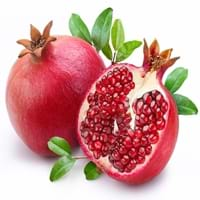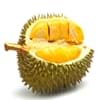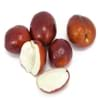Health Benefits
Cancer prevention, Heart care, Helps in cartilage regeneration, Improves stomach health, Increase in haemoglobin, Increases metabolic rate, Prevents constipation
Cancer prevention, Cures gastro-intestinal troubles, Improves night vision, Improves stomach health, Prevents diabetes, Prevents high blood pressure, Reduces blood circulation problems
General Benefits
Boosts immune system, Controls blood pressure, Controls blood sugar levels, Digestive aid, Maintains healthy cholesterol level
Fights against infections, Helps in weight loss, Prevents blood clotting in vessels, Treatment of urinary tract infections
Skin Benefits
Anti-aging benefits, Skin rejuvenation, Treatment of acne
Anti-aging benefits, Nourishes skin, Protects against skin damage
Hair Benefits
Prevents hair loss, Promotes longer and healthier hair, Treatment of dandruff
Prevents hair loss
Allergy Symptoms
Abdominal pains, Anaphylaxis, Itching
Not Available
Side Effects
Allergic reaction, Cold, Breathing difficulty, Irritation, Swelling
Decrease in blood sugar levels, Diarrhoea, Dizziness, Headache, Internal bleeding, Stomach pain
Best Time to Eat
Best if taken as a breakfast (or empty stomach), As a snack in the late afternoon, Eat the fresh ones, avoid mixing with any other foods, don't eat after meal., Morning time (before lunch)
As a snack in the late afternoon, Don't consume at night and before bed, Eat the fresh ones, avoid mixing with any other foods, don't eat after meal., Morning time (before lunch)
Vitamin B5 (Pantothenic Acid)
Vitamin C (Ascorbic Acid)
Vitamin K (Phyllochinone)
Calories in Fresh Fruit with Peel
Not Available
Calories in Fresh Fruit without Peel
Not Available
Calories in Frozen Form
Not Available
Not Available
Calories in Dried Form
Not Available
Calories in Canned Form
Not Available
Not Available
Varieties
Balegal, Crab, Cloud, Francis, Freshman and Granada
Dwarf bilberry, Piper, bog blueberry, Northern bilberry, Mountain bilberry and Oval-leaved bilberry
Color
Dark red, Light pink-red
Dark purple
Inside Color
Red
Light Green
Origin
India, Iran
Unknown
Soil Type
Clay, Sand
Moist, Well-aerated
Climatic Conditions
Cold, Dry, Hot
Cold
Facts about
- Pomegranate means apple with many seeds.
- It was called as the “apple of Grenada” in early English.
- In Hinduism, this fruit symbolizes prosperity and fertility.
- Pomegranate trees can live upto 200 years.
- Bilberries are used in manufacturing of alcoholic drinks.
- They are used to improve aromas of sorbets.
- The green extract of it's leaves is used in textile industry as natural dye.
Other Countries
Africa, India, Middle east, Pakistan
Denmark, Finland, Iceland, Sweden
Top Importer
Europe
United States of America
Botanical Name
Punica granatum
Vaccinium myrtillus
Synonym
Punica malus
blaeberry, whinberry, European blueberry, whortleberry
Subkingdom
Tracheobionta
Tracheobionta
Division
Magnoliophyta
Magnoliophyta
Class
Magnoliopsida
Magnoliopsida
Subclass
Rosidae
Dillenhidae
Family
Lythraceae
Ericaceae
Species
P. granatum
Vaccinium myrtillus
Generic Group
Pomegranate
Heath
Difference Between Pomegranate and Bilberry
We might think that Pomegranate and Bilberry are similar with respect to nutritional value and health benefits. But the nutrient content of both fruits is different. Pomegranate and Bilberry Facts such as their taste, shape, color, and size are also distinct. The difference between Pomegranate and Bilberry is explained here.
The amount of calories in 100 gm of fresh Pomegranate and Bilberry with peel is Not Available and 44.00 kcal and the amount of calories without peel is 83.00 kcal and Not Available respectively. Thus, Pomegranate and Bilberry belong to High Calorie Fruits and Low Calorie Fruits category.These fruits might or might not differ with respect to their scientific classification. The order of Pomegranate and Bilberry is Myrtales and Ericales respectively. Pomegranate belongs to Lythraceae family and Bilberry belongs to Ericaceae family. Pomegranate belongs to Punica genus of P. granatum species and Bilberry belongs to Vaccinium genus of Vaccinium myrtillus species. Beings plants, both fruits belong to Plantae Kingdom.









